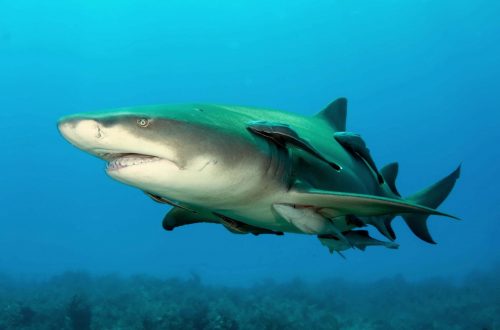Lemon Shark – {Negaprion brevirostris }
The lemon shark (Negaprion brevirostris) is a species of shark found in warm coastal waters, particularly in the Atlantic and eastern Pacific Oceans.

The lemon shark is easily recognized for its two, equally-sized dorsal fins and its yellow-brown to olive color- an ideal camouflage against the sandy in-shore areas they prefer to forage in. Lemon sharks average between 8 to 10 feet long as adults, but are generally not considered a threat to humans. They are social animals that can be seen in aggregations and prefer a defined home range. Lemon sharks are commonly exhibited in aquaria and research studies (Compagno et al. 2005, Sundström 2015).
Order: Carcharhiniformes
Family: Carcharhinidae
Genus: Negaprion
Species: brevirostris
Common Names :
The lemon shark gets its name because of its pale yellow-brown coloring. It is also known as:
requin citron (French)
kurznasenhai (German)
zitronenhai (German)
squalo limone (Italian)
cacao-limao (Portuguese)
tiburon galano (Spanish)
citronhaj (Swedish)
ceq (Wolof)

Lemon Shark

Lemon Shark
Are Lemon Sharks Aggressive?
Lemon sharks are not aggressive sharks. Despite their large size and fierce looks, humans are not on their menu. That is a great win for humanity, given the size and power of these aquatic predators. These yellowish brown sharks typically grow between 8 to 10 feet long and can weigh up to 400 pounds. They can weigh heavier than an adult female bear.
Despite the peaceful nature of the lemon shark, they are capable of causing immense damage to humans. They have sharp teeth, are bigger, and are better swimmers underwater than humans.


